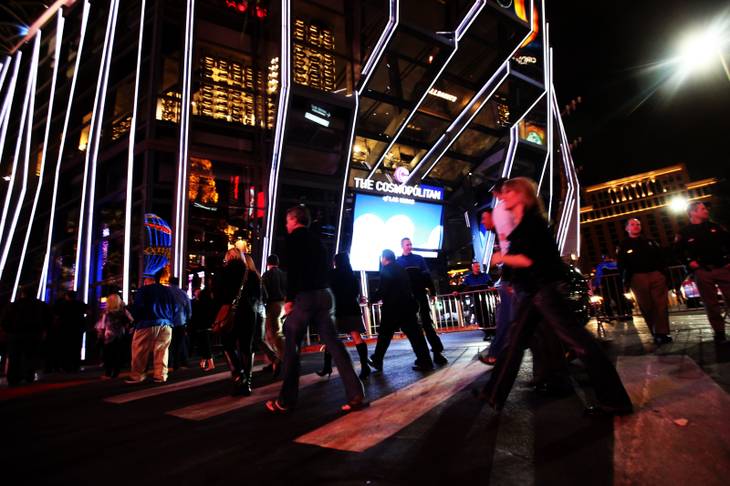Booking the likes of Coldplay and Jay-Z for your big coming out party isn't cheap.
The $3.9 billion Cosmopolitan of Las Vegas apparently spared little expense for its star-studded New Year’s Eve grand opening gala that some called “the party of the year.”
The undisclosed cost of the event is part of $116.5 million in resort “preopening expenses” that Cosmopolitan reported last month. Such expenses typically run in the tens of millions for big Las Vegas casinos, which rely on glitzy advertising campaigns and events to build buzz. These figures also tend to include the cost of hiring and training employees.
By contrast, neighboring CityCenter reported $184.2 million in preopening expenses for a bigger resort and condo complex built at more than twice the cost. That figure includes the 50 percent share of CityCenter owned by MGM Resorts’ partner Dubai World.
Including preopening expenses, Cosmopolitan posted a net loss of $139.5 million in its first 17 days of operation, from Dec. 15 through the end of last year, on revenue of $10.6 million. Cosmopolitan reported an operating loss of $151 million, equal to revenue minus expenses directly tied to the business of operating the resort, over that period.
CityCenter reported a $522.3 million net loss on revenue of $69.2 million in 2009, when it opened in stages beginning Dec. 1. CityCenter’s primary income generator, Aria, reported operating income of $9 million for the two weeks it was open in 2009, though it’s unclear which expenses were included.
Some analysts estimated that Aria made more than $50 million in gambling revenue in its first two weeks, mostly on high roller baccarat, though such results likely aren't sustainable.
Analysts say comparing Cosmopolitan’s performance to CityCenter’s based on so little data is difficult, while using it to handicap the future is next to impossible. Opening weekends generally attract big crowds that may not hold up long term. Also, New Year’s already attracts Las Vegas’ biggest crowds.
***
Unfortunately for Nevada, Chinese gamblers were luckier at the baccarat tables during Chinese New Year - one of the biggest gambling events for Las Vegas.
Big losses by baccarat players bolstered Nevada tax coffers in 2009 and 2010, when gambling revenue would have fared worse otherwise. That trend somewhat reversed itself this year, as baccarat players gambled less and won more than a year ago.
A 31 percent decline in baccarat and mini-baccarat revenue in January and February contributed to a 6 percent decline in gambling revenue on the Strip, the source of more than half of the state’s gambling revenue, according to an analysis by C.B. Richard Ellis’ Global Gaming Group in Las Vegas.
The firm combined both months to better gauge the effect of the long Chinese New Year holiday.
Excluding revenue from the Cosmopolitan of Las Vegas resort that opened Dec. 15, gambling revenue on the Strip fell 8 percent in January and February compared with the same period a year ago, C.B. Richard Ellis said.
***
Though gambling revenue appears to be stabilizing in Las Vegas, there’s evidence the masses aren’t gambling like they used to.
Slot machine wagers, a primary demand indicator for Las Vegas, fell 5 percent on the Strip in February. That’s the largest decline in a year and cause for concern this summer, an off-peak period for high rollers and expense-account wielding conventioneers, analysts said.
Strip casinos still made 3 percent more in revenue from slots in February because the machines overall were half a percentage point tighter than they were a year ago - a trend attributed to the proliferation of penny denomination games that pay out a smaller percent over the long haul.
“With the seasonally strong period for high-end gaming over, we expect mass trends to become increasingly important and we continue to expect leisure spend on the LV Strip, the core component of a recovery, to tread along trough levels,” Morgan Stanley stock analyst Mark Strawn wrote in a research note last week.
